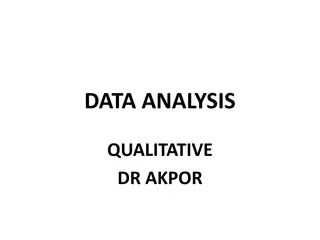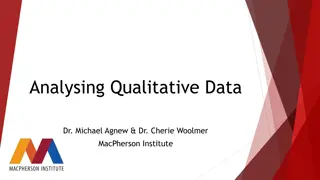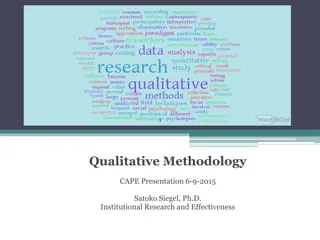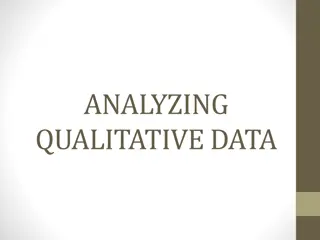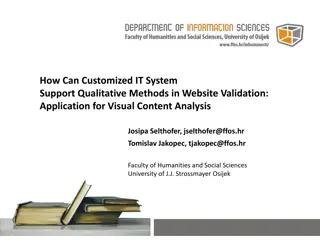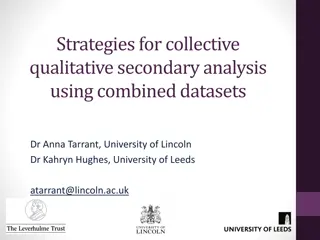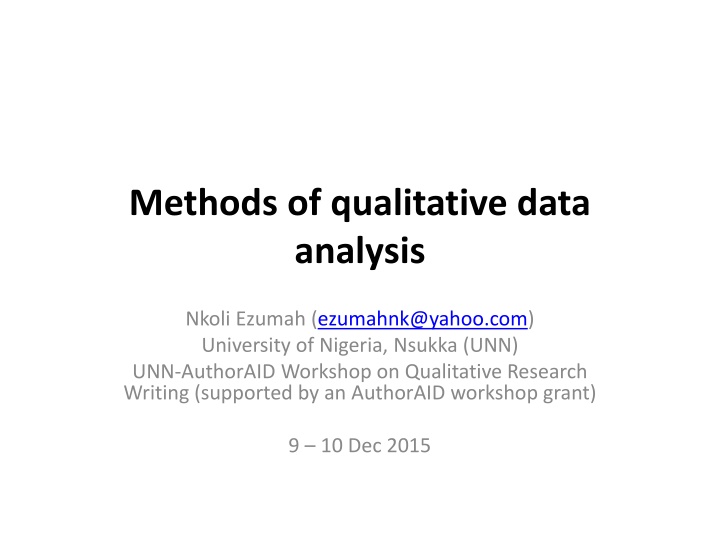
Effective Methods for Qualitative Data Analysis
Learn about qualitative data analysis methods such as content analysis, manual analysis, and computer-aided analysis. Explore the strengths and weaknesses of each approach to effectively interpret and organize qualitative data.
Download Presentation

Please find below an Image/Link to download the presentation.
The content on the website is provided AS IS for your information and personal use only. It may not be sold, licensed, or shared on other websites without obtaining consent from the author. If you encounter any issues during the download, it is possible that the publisher has removed the file from their server.
You are allowed to download the files provided on this website for personal or commercial use, subject to the condition that they are used lawfully. All files are the property of their respective owners.
The content on the website is provided AS IS for your information and personal use only. It may not be sold, licensed, or shared on other websites without obtaining consent from the author.
E N D
Presentation Transcript
Methods of qualitative data analysis Nkoli Ezumah (ezumahnk@yahoo.com) University of Nigeria, Nsukka (UNN) UNN-AuthorAID Workshop on Qualitative Research Writing (supported by an AuthorAID workshop grant) 9 10 Dec 2015
Creative Commons License This work is licensed under a Creative Commons Attribution-ShareAlike 4.0 International License (http://creativecommons.org/licenses/by-sa/4.0/)
Approaches in qualitative data analysis The most common is content analysis This entails identification of themes and the frequency of their occurrence This can be done manually or through the aid of computer
Manual analysis Transcription of recorded interviews and embedding field note information Code by highlighting sections of the text in colour to provide a summary of cases according to themes Cut and paste and put into similar subjects areas Can make use of index cards Interpret and explain the patterns that emerged
Weaknesses of manual analysis Difficulty in ensuring transparency Data is removed from context in the process of cutting and pasting Difficulty in merging data from various sources
Use of computer for analysis Stages and processes Uploading taped or audio recordings. Transcription of recorded interviews Adding reference to the transcripts of respondents ( to include identifiers for place/location, date, interview number, gender, age
Use of computer for analysis (contd.) Familiarization with the data: read through the transcripts Search for views, phrases, and words that are reoccurring Coding: Can be done at two levels, manually initially to identify emerging themes to serve as tree nodes (major themes) and child nodes that are subsumed in the major nodes
Use of computer for analysis (contd.) Coding can be done individually or as a team in group research Import transcripts into NVivo, using the coding system developed, apply codes to the transcripts. Find patterns in the data
Interpretation 1. Identify viewpoints that are similar 2. Reasons for their occurrence 3. Identify characteristics of respondents that are associated with the views expressed 4. Identify the most important themes derived from the data, see if it occurs across the entire transcript
Interpretation (contd.) 5. Explore to what extent your findings are related to other researches 6. Identify illustrative quotes to be used in your report writing 7. Identify theories that may be relevant to support your interpretation of data





